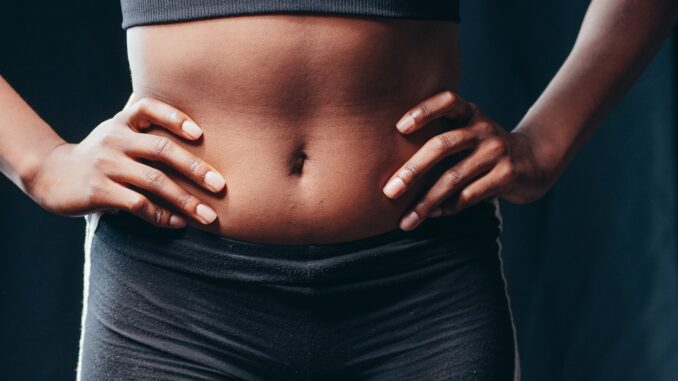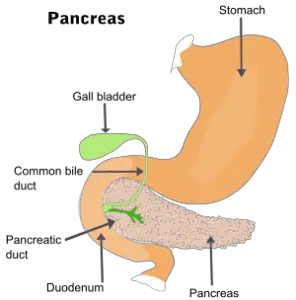
The gallbladder is a small, pear-shaped organ that stores bile. Bile is a fluid produced by the liver that helps with the digestion of fats. The pancreas is a long, thin gland that sits behind the stomach and produces enzymes that help with the digestion of carbohydrates and proteins. It’s estimated that around 20 million Americans have gallstones, and around 3 million have pancreatitis. Gallstones are more common in women, while pancreatitis is more common in men. There are a few theories as to why there might be a correlation between pancreatitis and gallstones. One theory is that the formation of gallstones might contribute to the development of pancreatitis. Another theory is that both conditions might be caused by a disorder of the liver or biliary system. Whatever the cause, it’s clear that there is a link between these two conditions.

What are the pancreas and gallbladder?
The pancreas is a gland that produces digestive enzymes and hormones. It is located behind the stomach in the upper abdomen. The gallbladder is a small, sac-like organ that stores bile produced by the liver. Bile helps break down fat in the intestine. Pancreatitis is inflammation of the pancreas. Gallstones are hard deposits of cholesterol or other substances that can form in the gallbladder.
What is the relationship between the pancreas and gallbladder?
The pancreas is a large gland located behind the stomach. It produces enzymes that help break down food in the small intestine and also secretes insulin, a hormone that helps regulate blood sugar levels. The gallbladder is a small, pear-shaped organ located under the liver. It stores bile, a digestive fluid produced by the liver. Bile helps break down fats in the small intestine.
Pancreatitis is an inflammation of the pancreas that can occur when the enzymes it produces begin to digest the pancreas itself. This can happen if the ducts that carry these enzymes become blocked, for example, by a build-up of fatty deposits. Pancreatitis can be acute, meaning it comes on suddenly and severely, or chronic, meaning it develops over time and may cause recurring episodes of pain and other symptoms.
Gallstones are hard deposits of cholesterol or other substances that can form in the gallbladder. They usually do not cause any symptoms unless they become lodged in one of the ducts that carries bile from the liver to the small intestine (known as a biliary duct). This can block the flow of bile and lead to pain in the upper abdomen, nausea, vomiting, and jaundice (a yellowing of the skin and whites of the eyes). Gallstones are more common in women than men and tend to develop after age 40.
What are pancreatitis and gallstones?
Pancreatitis is a condition that occurs when the pancreas becomes inflamed. This can be a result of infection, alcohol use, or other factors. Gallstones are hardened deposits of digestive fluid that can form in the gallbladder. These stones can block the ducts that connect the gallbladder to the pancreas, which can cause pancreatitis. In some cases, chronic pancreatitis can lead to the development of gallstones.
How are pancreatitis and gallstones related?
Pancreatitis is an inflammation of the pancreas that can occur suddenly (acute pancreatitis) or develop over time (chronic pancreatitis). Pancreatitis can be caused by a number of different things, including viral infections, certain medications, and alcohol abuse. Gallstones are hard deposits that form in the gallbladder. They are made up of cholesterol, bilirubin, and calcium. Gallstones can cause a blockage in the bile ducts, which can lead to pancreatitis.
What are the symptoms of pancreatitis and gallstones?
Pancreatitis is an inflammatory condition of the pancreas. The most common symptom of pancreatitis is abdominal pain. Other symptoms may include nausea, vomiting, fever, and weight loss. Pancreatitis can be acute or chronic.
Gallstones are hard deposits that form in the gallbladder. The most common symptom of gallstones is abdominal pain. Other symptoms may include nausea, vomiting, and fever. Gallstones can be painful and may require treatment.
How are pancreatitis and gallstones treated?
There are two main types of gallstones: cholesterol stones and pigment stones. Cholesterol stones are made mostly of cholesterol, while pigment stones are made up of bilirubin and calcium.
Pancreatitis is an inflammation of the pancreas that can be acute or chronic. Acute pancreatitis is a sudden and short-term inflammation of the pancreas that typically resolves within a week. Chronic pancreatitis is a long-term inflammation of the pancreas that can lead to irreversible damage to the organ and potentially death.
Gallstones and pancreatitis have both been linked to diet and lifestyle factors such as obesity, high fat intake, and sedentary lifestyle. Treatment for gallstones typically involves surgical removal of the gallbladder (cholecystectomy). Pancreatitis is treated with a combination of rest, pain relief medication, fluids, and sometimes surgery. In severe cases of chronic pancreatitis, a pancreatectomy (surgical removal of the pancreas) may be necessary.
Treatment for Gallstone Pancreatitis
Gallstone pancreatitis is a condition that results when a gallstone becomes lodged in the opening of the pancreas. This can cause the pancreas to become inflamed and can lead to serious health complications. Treatment for gallstone pancreatitis typically involves surgery to remove the stone and repair any damage to the pancreas. In some cases, medical therapy may be used in addition to surgery.
Conclusion
In conclusion, there is a correlation between pancreatitis and gallstones. Gallstones are more likely to form in people with pancreatitis, and people with pancreatitis are more likely to develop gallstones. However, this does not mean that every person with pancreatitis will develop gallstones, or that every person with gallstones has pancreatitis. Treatment for both conditions may include removing the gallbladder or pancreas, as well as lifestyle changes and medication.


Howdy very nice site!! Guy .. Beautiful .. Wonderful
.. I will bookmark your blog and take the feeds additionally?
I am happy to seek out so many useful information right here in the post, we need develop more
strategies in this regard, thank you for sharing. . . . .
.
Thanks for sharing your thoughts on vpn coupon code 2024.
Regards
Awesome post.
There’s definately a lot to find out about this topic.
I like all of the points you’ve made.
You really make it seem so easy with your presentation but I find this topic
to be actually something which I think I would never understand.
It seems too complex and extremely broad for me. I’m looking
forward for your next post, I’ll try to get the hang of it!
An intriguing discussion is definitely worth comment.
There’s no doubt that that you need to publish more about this issue, it might not be
a taboo subject but generally people don’t speak about
such topics. To the next! Best wishes!!
Ahaa, its nice dialogue regarding this post at
this place at this webpage, I have read all that, so at this time
me also commenting at this place.
Can you be more specific about the content of your article? After reading it, I still have some doubts. Hope you can help me.